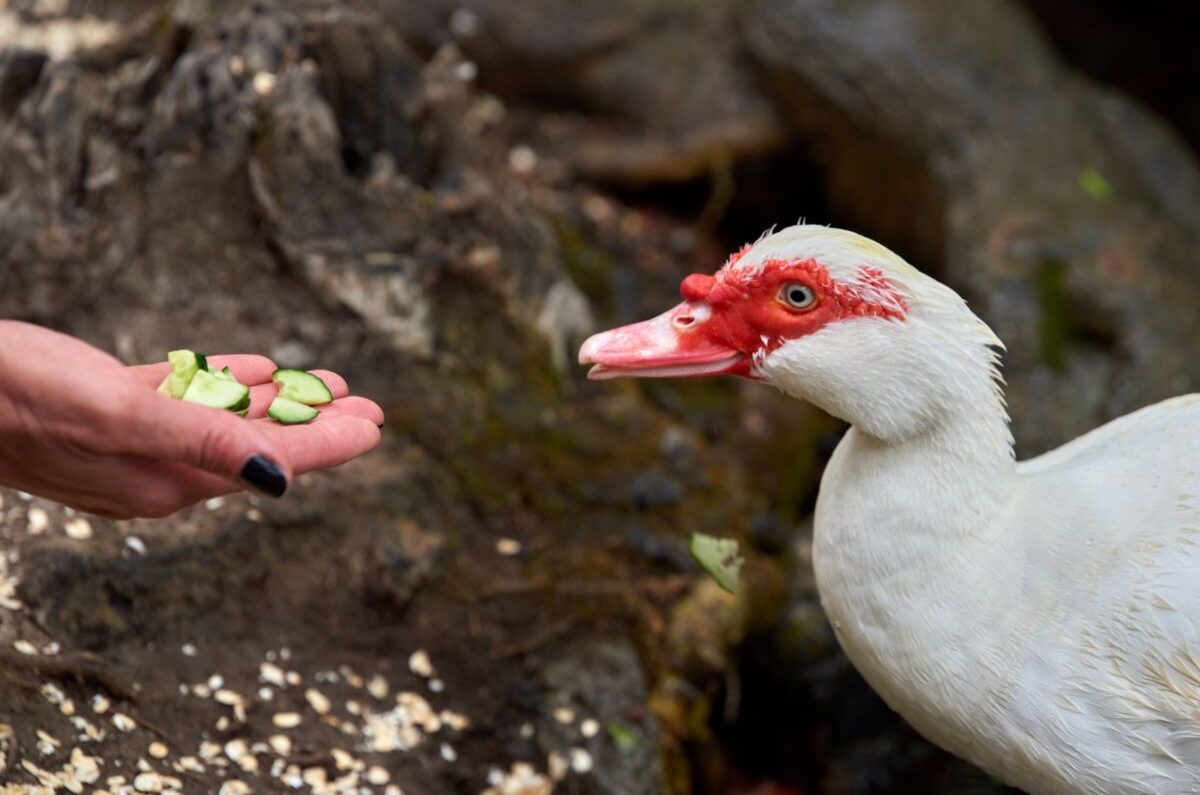Chickens are remarkably intelligent, highly social creatures who enjoy being part of a flock far more than being isolated on their own. To live harmoniously, chickens need a defined social structure called the pecking order. What it entails and knowing how it works is a topic that fascinates chicken keepers. It’s essential for them to learn about it in order to keep their chickens happy.
The pecking order reflects the hierarchy of the flock – who dominates and who is dominated. It is instinctive, in the birds’ DNA, and must be accepted as precisely that – it’s natural that the healthiest and strongest will “rule the roost,” and it’s an essential ingredient of a healthy flock.
To understand the importance of the pecking order and how the chicken-keeper plays a role, it’s vital to first look at the purpose, how it is established, and all the factors that influence it. These include the size, health, and temperament of the individual birds and the many external factors we will look at to fully understand the pecking order.
Contents
The Purpose Of The Pecking Order
As is the case with other social animals, there is an instinct in a chicken flock to keep order and a set routine. By working out a seniority ranking, there is no dispute about who feeds first, gets top spot on the roosting perch, first turn in the dust bath, and priority in all activities. The stronger chickens eat more, drink more, and choose their nesting boxes before the weaker ones.
The Role Of The Rooster In The Pecking Order
If there is an alpha rooster in the flock, healthy and stronger than the others, he will be top of the pecking order, and he will get to mate with the chickens while the other cockerels stay out of his way. He will also be responsible for guarding the coop against predators, finding food treats, and generally looking after the flock.
If there is no resident rooster in the flock, which is often the case, the top-ranking hen will take on the protector role.
The origin of the pecking order
The pecking order is a remnant of the wild ancestors of chickens – the Asian Bankiva Fowl. Bankiva Fowl live in small groups with one or more roosters and a few hens. Since their natural environment has many predators and not always enough food for all chickens, the pecking order helps to avoid unnecessary fights for resources.
The strongest hens and roosters, that are high up in the pecking order, are allowed to eat first and thus survive periods of low food. These genes are then passed on to the next generation and ensure the survival of the species.
Establishing The Pecking Order
The pecking order is created early in a flock, with young chicks pecking and jostling each other at the feed tray until the weaker ones retreat and allow the stronger chicks to eat first.
Pullets and young cockerels will peck at and even run and bump into each other in a test of strength. The aggression and pecking shown by the flock are transitory and seldom serious, and it doesn’t take long for things to settle down and the pecking order to be accepted.
Changes In The Pecking Order
There will always be movement of the flock up and down the pecking order, as some chickens become stronger, others weaken possibly through illness or injury, and positions are challenged.
Introducing New Chickens Into The Pecking Order
When new chickens are introduced into the existing flock, it creates stress while they establish their place in the pecking order. This is unavoidable, but you can make it a little less difficult by introducing the new birds gradually instead of all at once. They can be separated for a few days by placing them in a cage inside the run or in an adjacent run.
In this way, the old and new members of the flock get visual contact before being put together in the run. While there will inevitably still be some squabbles, they shouldn’t last long, and the new pecking order will be accepted by all.
If you want to know the best way to integrate new chickens into the flock, you can read more here.
Fitting The Chicken Keeper Into The Pecking Order
This is the tricky part! Chickens, it is said, can recognize up to one hundred faces. As a chicken keeper, you are one of the flock, even if you’re considered a very strange-looking bird, and you need to ensure that you are at the top of the pecking order. Assert yourself if challenged by an aggressive hen or rooster, possibly by firmly but gently holding them down until they calm down and acknowledge your superiority.
Here you can read about how to deal with an aggressive rooster.
The pecking, pushing, and feather-pulling during the pecking order contest is quite normal. As a chicken-keeper, the only time you should intervene is if a chicken is injured to the extent that they bleed. The smell of blood can trigger increased violence against the victim, and they may even be killed.
The Difference Between The Pecking Order And Bullying
When the violent aggression continues for more than just a few days and is targeted at a single chicken or a small group, the aggressors are no longer fighting for pecking order superiority but are simply bullying the victims.
Bullying is triggered by several factors, including:
- Lack of space in the run, possibly due to the introduction of new chickens.
- Boredom, if there is a shortage of toys and equipment for exercise such as swings.
- Shortage of food and water and too few feeders in the run
- Stress resulting from changes in routine, threats from predators and moving the run to a new location.
Whereas pecking order fights can be tolerated as it results in a peaceful, harmonious flock, bullying can be very destructive, creating stress in the flock, injury to, or even the death of the victims. It needs to be stopped by addressing the root causes.
Preventing Pecking Order Problems
The pecking order is a natural phenomenon essential for creating harmony in the flock. But problems can arise, apart from the bullying we’ve already discussed, which can be avoided with a few logical actions:
- Be careful what breeds you mix. Gentle breeds such as the Silkie, Orpington, Cochin, and Australorp will never be able to compete with aggressive breeds like the Old English Game, Cornish, Asil, and Sumatra.
- Ensure that there is always sufficient space in the coop and in the run to allow all the birds to move around freely – if they’re crowded and there are insufficient feeders, there will be constant pecking order disputes.
- Don’t interfere in the process – allow the chickens to sort out the pecking order and you will soon see a peaceful, harmonious flock happily scratching around and hopefully giving you plenty of eggs.
- Maintain a healthy flock – when individual chickens get sick or display weakness, they are liable to be demoted in the pecking order, and positions need to be reassessed and challenged.
Conclusion
The pecking order is a fascinating social phenomenon that occurs in all groups of chickens. It is an essential part of the life of a flock and, far from being a display of violence or infighting, is, in fact, the one ingredient needed for stability, security, and peace in the run.
Once you understand the pecking order that exists in your flock, you can watch the individual bird’s behavior and interaction with the others in a whole new light. The squawking, jostling, and occasional peck that occurs will clearly illustrate how the pecking order works in practice and is not something you need to eliminate.




